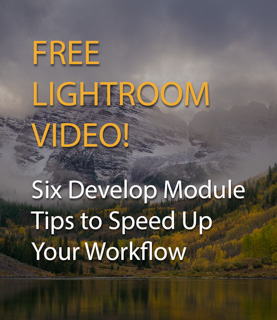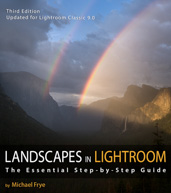In the Moment:
Michael Frye's Landscape Photography Blog
by Michael Frye | Oct 12, 2011 | Yosemite Photo Conditions
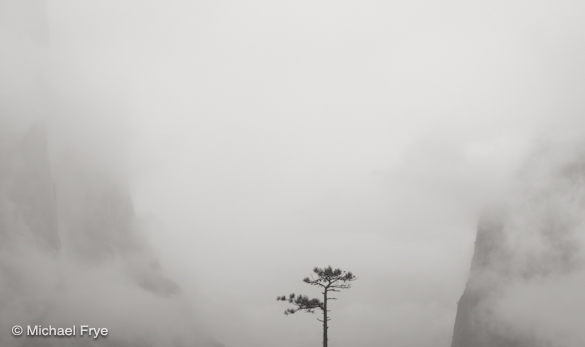
Tree, Tunnel View
It rained in Yosemite Valley on Monday afternoon, but my private workshop student Dale and I didn’t mind too much. While we got a little wet, the rain generated beautiful, ethereal scenes perfect for black-and-white photography. To me the mood was reminiscent of those Chinese paintings with misty hills and trees, so I looked for compositions that could emphasize that feeling. Here are a couple of my favorites.
(more…)
by Michael Frye | Oct 6, 2011 | Yosemite Photo Conditions
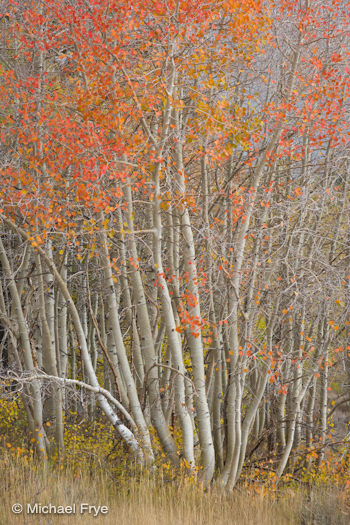
Aspens near Dunderberg, October 11th, 2010
The first winter-like storm of the season passed through Yosemite during the last two days, bringing over two inches of rain to Yosemite Valley, and enough snow to close Tioga Pass and necessitate R2 chain requirements on Highways 41 and 120 yesterday. There’s no word on when Tioga Pass will reopen; if I had to guess, I’d say sometime this weekend.
Although autumn was off to a late start on the eastern side of the Sierra, some of the higher-elevation spots outside of Bishop already had turned color. A storm like this will usually blow off the leaves that have already changed, and make partially-turned leaves turn brown. The good news is that most of the aspens on the east side were still green, and probably won’t be affected by the storm. However, it will be a week or two before those green leaves turn yellow, and color might be sparse over there during the next week.
The same thing happened last year: a large storm closed Tioga Pass on October 4th, one day earlier than this year. And yellow aspens were scarce for a week or so. But we found some nice color on October 11th, as you can see in the accompanying photo, and even better color a week later.
Meanwhile in Yosemite it’s early for autumn color, and it’s likely to be a couple of weeks before things really start to change. Peak color in Yosemite Valley usually doesn’t arrive until the end of October or beginning of November. I’ll keep you posted on what I find. Another good way to follow current conditions is through the CalPhoto group on Yahoo. And if you’ve been out photographing fall color recently, please let us know what you found by posting a comment!
—Michael Frye
Related Posts: Wild Weather, and the Annual Fall Freakout; A Trip to the Eastern Sierra; Autumn in Yosemite
Michael Frye is a professional photographer specializing in landscapes and nature. He is the author and photographer of The Photographer’s Guide to Yosemite, Yosemite Meditations, and Digital Landscape Photography: In the Footsteps of Ansel Adams and the Great Masters, plus the eBook Light & Land: Landscapes in the Digital Darkroom. He has written numerous magazine articles on the art and technique of photography, and his images have been published in over thirty countries around the world. Michael has lived either in or near Yosemite National Park since 1983, currently residing just outside the park in Mariposa, California.
by Michael Frye | Sep 29, 2011 | Critiques
I continue to get lots of great submissions for my photo critique series. Thanks to all of you who have submitted work!
When selecting images to critique I usually pick photos that are good, but could be improved in some way. That gives me something to talk about, and I think these good-but-not-perfect photos are usually very instructive.
But that means many great images don’t get picked, and lie in obscurity in the Flickr critique pool. So for this post I thought I’d do something different and showcase some beautiful photos that I haven’t critiqued because I can’t figure out how to improve them. There are many more, and I wish I could show them all, but for now here are eleven rejects from the critique pool—rejected because they’re just too good:
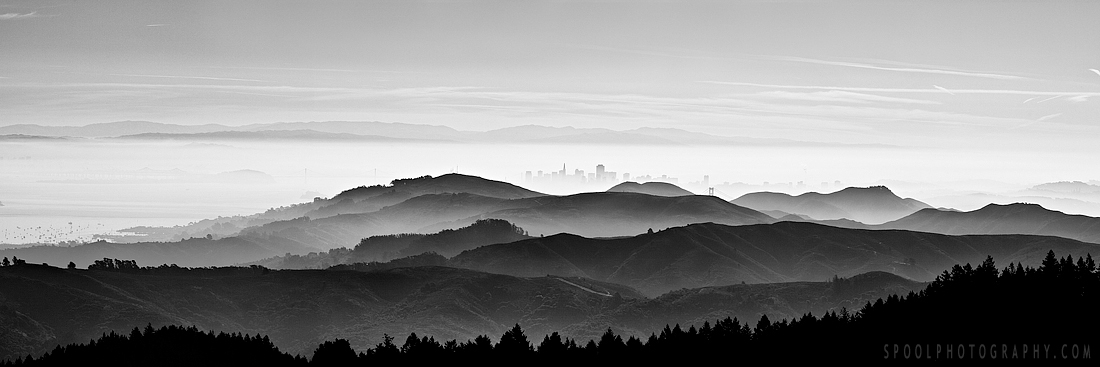
"San Francisco" by Neal Pritchard
I love the layers of hills leading to the barely-visible but still recognizable San Francisco skyline. You can see more of Neal’s work on his web site and Flickr stream.
(more…)
by Michael Frye | Sep 28, 2011 | Announcements
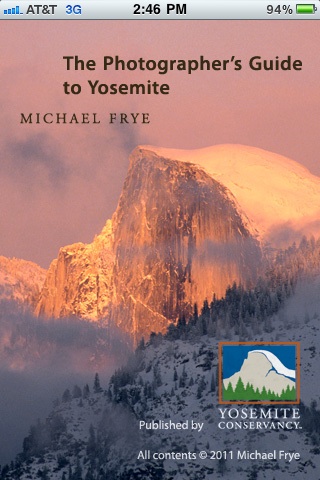 I’ve heard a lot of wonderful comments about the iPhone app version of the Photographer’s Guide to Yosemite since it was released almost two weeks ago. There are ten ratings and eight reviews in the app store, all five stars. And many of you have taken the time to write me personally to say how much you like the app. Thank you all so much! I really appreciate all the kind words, and I hope the app helps all of you get some great photos of Yosemite.
I’ve heard a lot of wonderful comments about the iPhone app version of the Photographer’s Guide to Yosemite since it was released almost two weeks ago. There are ten ratings and eight reviews in the app store, all five stars. And many of you have taken the time to write me personally to say how much you like the app. Thank you all so much! I really appreciate all the kind words, and I hope the app helps all of you get some great photos of Yosemite.
We just released a minor update to the app, version 1.1. This fixes a minor inconsistency in the menus, and adds a link to the YouTube video about the app in the Extras section. This update should appear automatically in the App Store on your phone or iPod Touch, and of course the update is free.
I’ve had lots of questions about iPad and Android versions. First, the current iPhone version will work on the iPad, but it’s designed for the iPhone’s smaller screen. We are working on a version that’s optimized for the iPad, with a new design that takes advantage of the larger screen, and some additional features. We’d love to make this a free upgrade, so that iPad users could download the iPhone version now, and upgrade to the iPad-only version when it comes out. Unfortunately, due to the large size of the iPad app (lots of photos!), we have to make it a separate application in iTunes, and it won’t be eligible for an upgrade from the iPhone version. Of course I hate to suggest waiting to buy the app! But the iPad version will be available soon, maybe even within the next month, so if you own an iPad and can wait a bit I’d suggest doing so.
As for an Android version, we are working on that too, but that will take a bit longer, as it’s a completely different operating system that requires different coding. We hope to have that available early next year.
Thanks again for all your support!
—Michael Frye
Related Posts: The Photographer’s Guide to Yosemite iPhone App is Available Today!
Michael Frye is a professional photographer specializing in landscapes and nature. He is the author and photographer of The Photographer’s Guide to Yosemite, Yosemite Meditations, and Digital Landscape Photography: In the Footsteps of Ansel Adams and the Great Masters, plus the eBook Light & Land: Landscapes in the Digital Darkroom. He has written numerous magazine articles on the art and technique of photography, and his images have been published in over thirty countries around the world. Michael has lived either in or near Yosemite National Park since 1983, currently residing just outside the park in Mariposa, California.
by Michael Frye | Sep 22, 2011 | Reviews
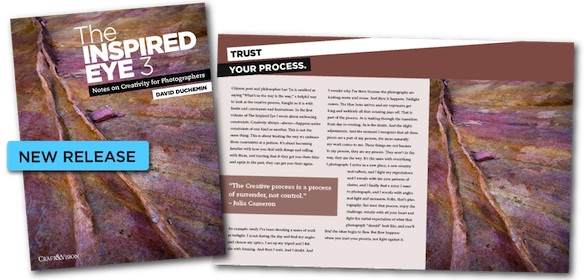
David duChemin has just released another eBook, The Inspired Eye III. If you read my review of his previous eBook, A Deeper Frame, you know that I’m a fan of David’s writing. He looks at photography in a deeper way than most, and is able to articulate sometimes-complex ideas clearly.
This latest eBook, the third part of his Inspired Eye series, is no exception. It contains lots of interesting thoughts and insights into the creative process of photography. I was particularly struck by this passage:
“You can learn about photography by reading books, watching videos, and listening to other photographers. You can study hundreds of photographs. But you will not learn your own process of making photographs until you have a camera in your hands and you make photograph after photograph.”
As I mentioned in my last post, I went to the Millpond Music Festival last weekend, and in his workshop on Sunday Joe Craven said something similar—that we learn by imitating, and by doing, not by studying theory. I think he’s right on the mark about that, and so is David in saying that you have to make lots of photographs to “learn your own process.”
(more…)
by Michael Frye | Sep 21, 2011 | Yosemite Photo Conditions
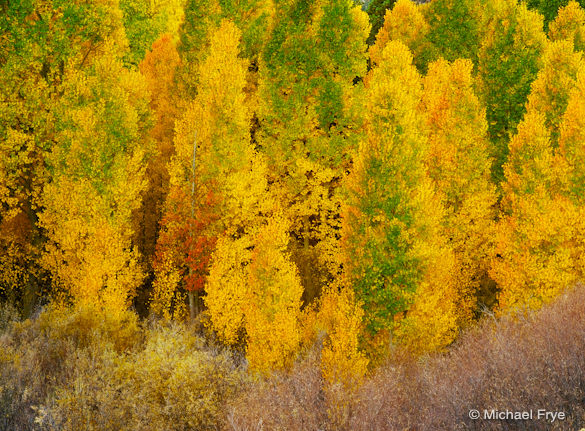
Yellow and green aspens in Lee Vining Canyon (from a few years ago)
Last weekend Claudia and I made our annual pilgrimage to Bishop, on the eastern side of the Sierra, for the Millpond Music Festival—or, as Joe Craven likes to say, “Music festival and consciousness-raising event.”
We’ve actually lost track of how many years in a row we’ve gone to Millpond; it’s either twelve or thirteen. But we look forward to it every year—it’s relaxing and fun, and a great way to refresh and renew our spirits. I think I see more smiling faces per hour at Millpond than anywhere else. In fact this past Sunday evening, dancing in front of the stage to Masanga Marimba and Los Lobos (an interesting mix!), I think I saw more big, wide, joyous smiles than I’ve seen all year.
By now you’re probably wondering, “What’s this got to do with photography?” Well first of all, I think we all need to recharge ourselves once in awhile. For me, since I tend to eat, sleep, and breathe photography on most days, it’s good to do something completely different. And Millpond is not only different, but I get to be outside and enjoy something creative and life-affirming like music.
(more…)
by Michael Frye | Sep 15, 2011 | Announcements

It’s here! The Photographer’s Guide to Yosemite iPhone app is on sale now in the app store. Watch the video to see a demonstration of its features, including:
• In-depth descriptions of 40 outstanding locations including the classic Yosemite Valley views, high country, and surrounding areas.
• Locations Filter—a unique feature that allows you to quickly find the best photo spots for any month and time of day.
• Over 100 stunning photographs show you what you can see at each location.
• Detailed maps and directions.
• Clear, logical layout makes it easy to find the information you need.
• Lots of photography tips to help you capture better images of the park, including Exposure for Digital Cameras, Composition, Depth of Field, HDR and Exposure Blending, Photographing Waterfalls and Cascades, Clearing Storms, and more.
• Sunrise and sunset times, full moon dates, and depth-of-field calculator
• Seasonal Planning Guide helps you find unique photo opportunities for each month.
(more…)
by Michael Frye | Sep 13, 2011 | Announcements
 Since it was first published in 2000, my book The Photographer’s Guide to Yosemite has been very popular. Over the years, I’ve heard from so many photographers who love the book and have found it helpful when trying to capture images of Yosemite. Thank you all so much!
Since it was first published in 2000, my book The Photographer’s Guide to Yosemite has been very popular. Over the years, I’ve heard from so many photographers who love the book and have found it helpful when trying to capture images of Yosemite. Thank you all so much!
On Thursday, The Photographer’s Guide to Yosemite will become available as an iPhone app! This app contains all the information in the original book, and much more: three new locations, completely revised and updated information for the entire park, and new tips specifically designed for digital photography. Plus many great features that could only work in an app—like the ability to filter the locations and find only the best ones for a particular month and time.
I’ll give you all the details on Thursday—stay tuned!
by Michael Frye | Sep 7, 2011 | Composition, Digital Darkroom, Photography Tips
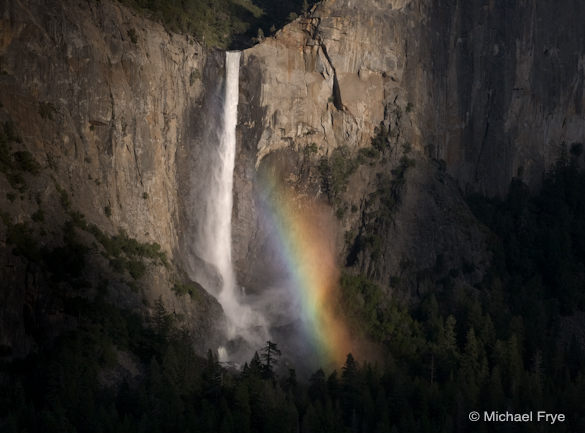
My preferred crop for this image of Bridalveil Fall doesn't fit any of the common print sizes.
In the comments for my last critique, Michael Glover asked a question about cropping and aspect ratios. I get this question a lot, as many people feel that they must crop their images to a certain size—4×6, 8×10—for printing. So I thought I would expand on my answer to Michael and address this issue in more depth here.
The problem with cropping to fit a particular aspect ratio for printing is that you can compromise the photograph’s esthetics. The accompanying images of Bridalveil Fall show what I mean. Below you’ll find the uncropped version, with its original 2:3 (or 4×6 or 8×12) aspect ratio, and a version cropped to a 4:5 (or 8×10) ratio.
To me, the uncropped version leaves too much empty space on the right and left sides, while the 4:5 ratio is too square, and a bit static. I prefer the crop at the top of this post, which lies somewhere in between.
(more…)
by Michael Frye | Sep 2, 2011 | Announcements, Workshops
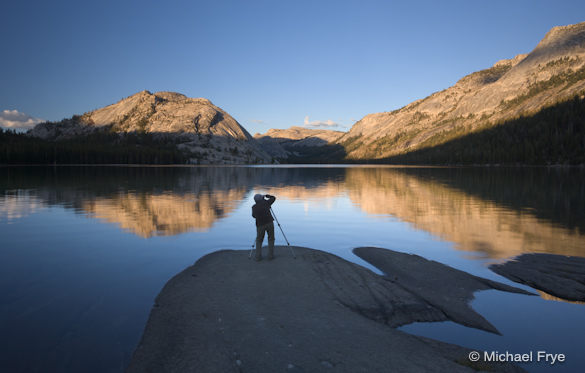
Workshop participant at Tenaya Lake
The Ansel Adams Gallery has released their (nearly) complete workshop schedule for 2012. I’ll be teaching four workshops for them, including Landscapes in the Digital Darkroom: Mastering Lightroom (January); Spring Yosemite Digital Camera Workshop (April); Full Moon Night Photography (July); and The Digital Landscape: Autumn in Yosemite (October).
Lightroom has rapidly become the software tool of choice for many photographers because it’s simple, yet powerful—easy to use, but sophisticated enough to get great results with almost any image. For the first time I’ll be teaching a workshop specifically focused on this tool—Landscapes in the Digital Darkroom: Mastering Lightroom.
(more…)










